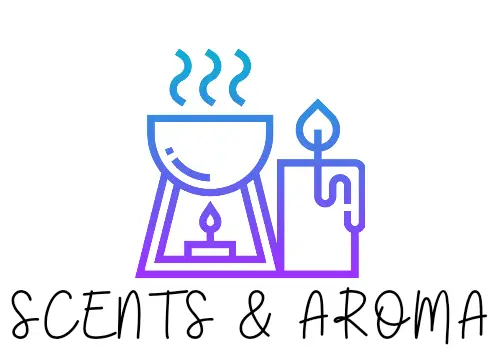Candle enthusiasts swear by their therapeutic properties all day long. Everyone loves being able to just sit at home and light a candle, so they can enjoy the relaxing and calming feeling that the candle brings.
However, we all also know that nothing is perfect. Candles fall into this category as well. Some people have complained that they don’t necessarily like the sensation that candles bring, and they’ve gone as far as saying that candles make them dizzy. If you’re concerned about candles before you buy them, you would want to know whether there is any basis for these fears.
So do candles make you dizzy? Some candles could make you dizzy or feel sick due to the chemical composition of their materials. This is especially true when it comes to scented candles. Different manufacturers use different materials and chemicals and if you have an allergy to any of them they could make you dizzy or sick.
Why Can Candles Make You Sick?
Today, many articles on the internet talk about the dangers of candles – particularly, the scented ones. But, most of these articles only contain inconclusive proof. Regardless, candles could be dangerous to your health if you’re not careful. Here are some reasons why:
Paraffin Wax

Most mass produced, big brand candles today are made from paraffin, think of brands such as Yankee Candle. – we all probably know this. Paraffin is a byproduct of petroleum – just like fuel, kerosene, and more.
To create paraffin, manufacturers bleach the petroleum waste with chemicals. Then, they deodorize it and make it into the wax that you see.
When it is burned, paraffin wax could release some volatile compounds into the air. These include things like acetone, toluene, and benzene. These chemicals are similar to those found in fuel emissions. They’re known to trigger significant allergies, such as respiratory issues (asthma, etc.). In some cases, the chemicals could also affect people with sensitive skin.
There are even some cases where candles made of paraffin end up emitting low levels of benzene even while not being lit.
Besides releasing toxic chemicals into the air, paraffin wax burning can also produce soot with particles. In some cases, some of these particles could stay in the air for hours. A study showed that these soot particles are similar to some particles found in diesel exhaust when it is burned. They get into the lungs and can be absorbed into the bloodstream. In general, soot particles are also linked with several allergies like asthma.
But, you should keep in mind that most candle manufacturers try to keep the level of paraffin in their wax to a minimum. Regulators and government agencies have placed a maximum limit on the amount of paraffin to be used in candle wax, and many manufacturers do their best to stay within these limits.
There are much better alternatives to paraffin wax candles now such as Soy wax or beeswax. For more information on which is the best for your health check out my helpful guide.
Chemical Fragrances
This is a bit of a concern with scented candles most especially. Some of these scented candles use chemicals to create that lovely aroma, but the chemicals themselves might not necessarily be safe.
Some scented candles use synthetic fragrances as well as dyes to deliver their signature smells. While you might love the smell, these chemicals give dangerous chemicals. Common chemicals emitted include petroleum distillates, formaldehyde, alcohol, limonene, and more. Many of these chemicals cause issues like allergy triggers and dizziness. In some extreme cases, they could also cause headaches.
For your safety, we recommend that you check the composition of your scented candles before you purchase them.
For more information about fragrance oils and essential oils check out this guide I wrote.
Cored Candle Wicks
Some candles come with cored wicks, which are made from cotton that is wrapped around a metal. Thanks to this structure, the wick has proper support and will be able to stand without falling over into its wax. Once more, this is more useful for scented candles. Their fragrance oils can soften the wax, making the non-cored wicks tip over.
Back in the day, candle manufacturers used lead to core their candle wicks. Foreign manufacturers did this most. But, after determining that the wicks could cause lead poisoning in children, the United States Consumer Product Safety Commission banned the use of lead in wick coring back in 2003. At the same time, the agency banned the use of lead-cored wicks in the country.
Now, most manufacturers use zinc and tin to core their candle wicks. Still, any candle with a metal core as its wick will release some amounts of heavy metals into the air after a fire has been applied to it. So, you could still get some lead particles from tin and zinc-cored candles. So, dizziness is still a possibility.
To stop this risk look for candles that contain a wooden wick.
Breathing Candle Smoke
If you’re feeling dizzy while candles are being burned around you, it could be because you’ve been inhaling way too much of the smoke. Remember that candles release soot, and this could trigger allergies and cause dizziness. So, the problem could just be that you’ve been inhaling the candle smoke for too long.
We recommend that you reduce the amount of smoke you breathe in. Be careful with the candle and its lighting, and try not to stay too close to it as smoke bellows from its tips.
What Candles Are Good For Your Health?
Like we’ve shown, burning anything will present a bit of a threat to you. No matter how much the candle manufacturers try to abide by the best practices, there’s always a bit of a danger. Anything that is burned can release chemicals that will affect your health.
If you want to reduce the amount of matter you breathe in when you light a candle, you could find candles made from natural sources. Studies have shown that candles made from palm stearin will only release 50 percent of the soot that you get from chemicals made with paraffin. Also, natural candles have been found to release the lowest amount of dangerous chemicals.
Some natural products used to make candles today include:
- Beeswax
- Vegetable wax
- Coconut wax
- Palm wax
- Soy wax
How to Prevent Dizziness With Candles
Watch Out for the Candle’s Constituents
We recommend that you check the pack on a candle before purchasing it. Check out the material used for its core, the wax’s components, and more. Anything you burn can be dangerous, but some candles are definitely more dangerous than others.
Ensure Proper Ventilation
You also need to be careful when lighting the candle. To avoid inhaling too much of the smoke, ensure that there’s enough ventilation. This will go a long way in protecting you.
Try Some Alternatives
You could also find alternatives to help you freshen up your home. These alternatives include potpourri and essential oils for fragrances.
There are even wax melts which are like candles but without burning wax or a wick. I have a helpful Guide on what wax melts are and how you should use them.
Conclusion
Regardless of the makeup, you can get dizzy when you light a candle. Most candles have chemicals that help them to work so well, and burning them will release these chemicals into the air. In many cases, these chemicals can have side effects like triggering allergies and making you dizzy.
But, you can also be careful with candles. Watch out for the products used in making a candle before you buy it, and ensure to only light candles in rooms with proper ventilation. You can also keep your candles away from drafts to reduce the amount of smoke they emit.
- Can You Put Perfume In A Humidifier? (Read First) - September 17, 2022
- Can You Put Essential Oil In A Steam Mop? (Safety Advice) - September 17, 2022
- How To Make Lavender Oil At Home ( Candles And Diffusers) - September 9, 2022
